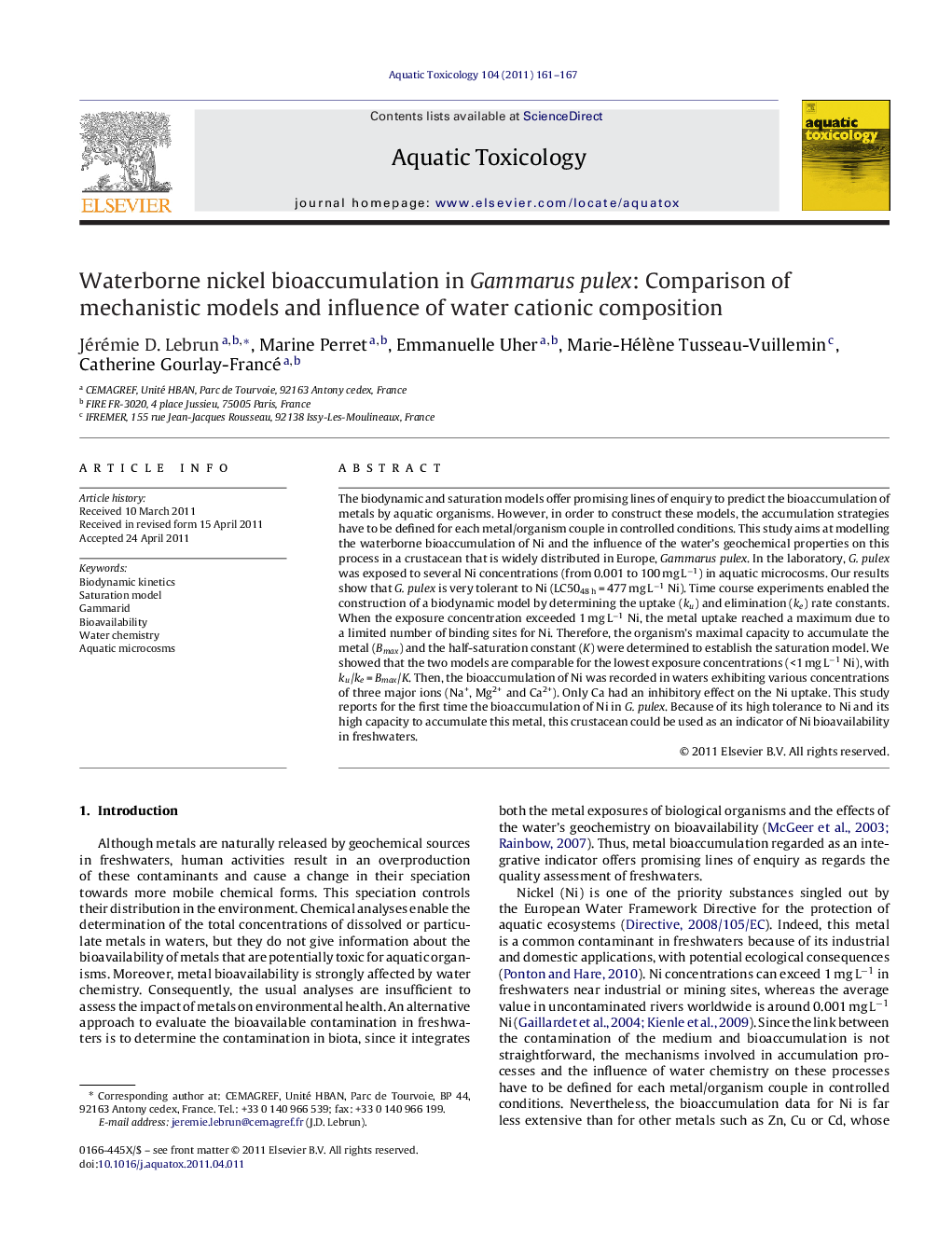| Article ID | Journal | Published Year | Pages | File Type |
|---|---|---|---|---|
| 4529990 | Aquatic Toxicology | 2011 | 7 Pages |
The biodynamic and saturation models offer promising lines of enquiry to predict the bioaccumulation of metals by aquatic organisms. However, in order to construct these models, the accumulation strategies have to be defined for each metal/organism couple in controlled conditions. This study aims at modelling the waterborne bioaccumulation of Ni and the influence of the water's geochemical properties on this process in a crustacean that is widely distributed in Europe, Gammarus pulex. In the laboratory, G. pulex was exposed to several Ni concentrations (from 0.001 to 100 mg L−1) in aquatic microcosms. Our results show that G. pulex is very tolerant to Ni (LC5048 h = 477 mg L−1 Ni). Time course experiments enabled the construction of a biodynamic model by determining the uptake (ku) and elimination (ke) rate constants. When the exposure concentration exceeded 1 mg L−1 Ni, the metal uptake reached a maximum due to a limited number of binding sites for Ni. Therefore, the organism's maximal capacity to accumulate the metal (Bmax) and the half-saturation constant (K) were determined to establish the saturation model. We showed that the two models are comparable for the lowest exposure concentrations (<1 mg L−1 Ni), with ku/ke = Bmax/K. Then, the bioaccumulation of Ni was recorded in waters exhibiting various concentrations of three major ions (Na+, Mg2+ and Ca2+). Only Ca had an inhibitory effect on the Ni uptake. This study reports for the first time the bioaccumulation of Ni in G. pulex. Because of its high tolerance to Ni and its high capacity to accumulate this metal, this crustacean could be used as an indicator of Ni bioavailability in freshwaters.
